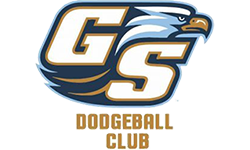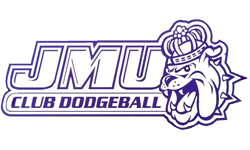- Film Date: TBD
- Camera: Sam Murphy
- Participants/Actors: Zigmas Maloni, Sam Murphy, Troy Dixon
- Dress: Whistles, Card set, black pants, Referee shirts or any of the Nationals shirts.
- Location: Court 4, Ray Meyer. Curtain down, IM Closet access for dodgeballs.
Outline
- Intro: Logos, Title card, introduction to the goal behind the video
- Definition, Equipment, and Placement:
The Court
Dodgeballs (placement x’s, proper inflation)
Officials’ Equipment [4.1.2… Whistles: 4.2.2.4, 4.2.3.4.5, Rulebook]
Placement [Court Visual, 4.1.3]
Officials’ Duties/Responsibilities: Area of Responsibility [4.2.2.2…] for all: HR [4.3.1.1, 4.3.1.3], AR [4.3.2…], SC [4.3.3…, 4.3.3.4], JG [4.3.4], AS [4.3.5…], BS [4.3.6…] - Pregame [4.3.1.2]: Captains Meeting [4.3.1.2.3], Definition of lines
- Officials’ Authority:
Referee’s Discretion [4.2.2]
Officials’ Conference [4.2.2.3.1]
Philosophy [4.2.1, 4.2.3…, Calls 4.2.3.2, Ethics 4.2.3.3, Game Control 4.2.3.4, Players entering play in correct order.] - Signaling [4.4…]
- Ambiguous Calls from the Casebook: Reversing the Jail, Trap Catches, Ball Trap Catch, Team Ball Trap Catch, Boundary Violations, Out of Bounds, Neutral Zone, 1 on 1 double fault
Intro
FADE IN: NCDA Logo, NCDAdodgeball.com
TITLE CARD: NCDA Officiating Mechanics
MS, ZM
ZM: Hello, I’m Zigmas Maloni, General Coordinator for the NCDA, the National Collegiate Dodgeball Association. We’re here on DePaul Dodgeball’s home court at the Ray Meyer to explain some of the officiating mechanics that NCDA officials use to keep order in a dodgeball game.
Definition, Equipment, and Placement:
Placement [Court Visual, 4.1.3], Officials’ Duties/Responsibilities: Area of Responsibility [4.2.2.2…] for all: HR [4.3.1.1, 4.3.1.3], AR [4.3.2…], SC [4.3.3…, 4.3.3.4], JG [4.3.4], AS [4.3.5…], BS [4.3.6…]
The Court
VWS, up from track onto Court 4. The court is set in NCDA configuration, with 3-4-3 on the lines, with Officials in their designated locations.
Morph into Rulebook diagram 2.2.2.5
NARRATOR: Lets begin with the Ideal Court. Here you can see the layout of the balls, placement of officials, where the jails go, and whatnot.
A dodgeball court is roughly divided into thirds. On a regulation NCAA Basketball court that’s 94 feet long, each zone is more or less 30 to 31 feet. Keep this rule of thirds in mind, since some courts aren’t regulation size. For a comparison, a NBA basketball court is 94 feet long, and the top of the 3 point line is about 28 feet from the baseline.
Lets focus on the dodgeball setup. Notice that the dodgeballs are spaced apart evenly on their respective lines. Also notice that the attack line balls are arranged in such a way so they are not tripping hazards for runners going for the halfcourt line.
CS, “X” marked in tape.
NARRATOR: When taping off the neutral zone in pregame, it might also be useful to mark exactly where the balls should be set. This will help the Crew reset for the Opening Rush a little bit faster.
Dodgeballs
CS, Showing proper inflation, Gripping, Ball bouncing, comparison to deflated ball
NARRATOR: A dodgeball within the NCDA is not inflated until it is taught. It is inflated to a point where it is grippable, and the ball still bounces.This ball is not inflated to a playable pressure. Notice it doesn’t bounce, its lack of “ballness”. It’s the duty of the Head Referee and Host to ensure dodgeballs are fit for play.
Officials Equipment
MS, Officials’ equipment laid out
NARRATOR: Proper equipment is important to a solid officiating crew. Aside from a stopwatch or stopclock for usage in the game clock, here’s some useful equipment.
HIGHLIGHT (or maybe arrow to) SHIRT: Officials should have should have a common shirt. Shown here is a referee style shirt, with vertical black and white stripes. But the Staff could wear any color that is different than the colors of the teams playing.
HIGHLIGHT WHISTLE: The most crucial part of the Crew’s equipment is the Whistle. The Head Referee, Assisting Referee, and the two Timekeepers should all have a whistle. Keep in mind that any Official that blows the whistle stops play and draws attention. Blowing the whistle unnecessarily should be kept to a minimum.
HIGHLIGHT CARDS: Since the Head and Assisting Referee are the only two Officials with the ability to issue red and yellow card, each Referee should have a set. In lieu of the cards, Timekeepers should have a timepiece, like a watch or stopwatch, to keep their count accurate.
HIGHLIGHT RULEBOOK: Having a rulebook on hand, as well as knowing it, is crucial in dealing with any ambiguities that may come up. The NCDA Rulebook is posted on NCDAdodgeball.com, under the Rulebook link. Interested individuals can also purchase a fancy booklet by request.
Location Mechanics
LS, Court Diagram, highlighting the locations of the Staff as they are mentioned.
NARRATOR: Head Referee stands at halfcourt, with the Assistant Referee standing on the opposite side. The Shot Clock Timekeepers stand at the edge of the Attack Lines, on the same sideline of the Assistant Referee.
Any additional Judges should be placed at the corners of the court, in the best vantage points for Sideline or Baseline Boundary Violations. Judges should be placed at the corners of the sideline opposite the Timekeepers.
When not retreiving a ball, Ball Shaggers should be far enough from the Court so as not be confused as in play.
Officials’ Duties/Responsibilities
Officials’ Duties/Responsibilities: Area of Responsibility [4.2.2.2…] for all: HR [4.3.1.1, 4.3.1.3], AR [4.3.2…], SC [4.3.3…, 4.3.3.4], JG [4.3.4], AS [4.3.5…], BS [4.3.6…]
HEAD REFEREE: The Head Referee is the the Crew Chief, in charge of the Officials and the Staff, standing at halfcourt. The Head Ref is responsible for handling the Pregame setup, for starting and stopping the Clock as gameplay necessitates, and setting the Score. Being the final say as to the ruling on the Court, the Head Referee may issue Red or Yellow cards when necessary. It is up to the Head Referee to control game by leading the Officiating Crew. Important techniques are Preventive Officiating and selling the call.
ASSISTING REFEREE: The Assistant Referee stands on the opposite side of the Head Referee, on the same sideline as the Timekeepers. In addition to assisting the Head Referee in officiating the game, the Assistant Ref is responsible for controlling the Shot Clock: Keeping proper timing, making sure the Timekeepers are using the proper mechanics. The Assistant Referee is the final judge on whether a throw is not a legitimate attempt to reset the shot clock.
SHOT CLOCK: The Shot Clock Timekeepers each oversee the Shot Clock for a particular team. They do have the ability to Judge a particular call, but their primary duty is accurately enforce the Shot Clock. It is important for the Timekeeper to maintain a proper consistency and timing, so using a timepiece is recommended. This can be any device that counts seconds.
MS, Signaling the Shot Clock
The Timekeeper signals the count of the Shot Clock in a low horizontal count extension. When signalling the last five seconds of the Shot Clock, the count extension shifts to vertical counts and the Timekeeper announces the count verbally. Vertical counts help the Referees and team Captains better determine where the count is and who close a violation is.
JUDGE:
ASSISTING STAFF:
BALL SHAGGER:
Pregame
[4.3.1.2]: Captains Meeting [4.3.1.2.3], Definition of lines
Officials’ Authority
Referee’s Discretion [4.2.2], Officials’ Conference [4.2.2.3.1], Philosophy [4.2.1, 4.2.3…, Calls 4.2.3.2, Ethics 4.2.3.3, Game Control 4.2.3.4, Players entering play in correct order.]
Signaling
4.4.01 Opening Rush – Make sure officials are ready, both teams are ready, Whistle.
4.4.02 False Start – Rotate fists, extend arm to violating team.
4.4.03 Stop Clock – Head Referee whistles, Wave arms over head.
4.4.04 Start Clock – Ready teams, Whistle. No Whistle: Raise hand, drop swiftly.
4.4.05 Shot Clock Violation – Wave arms over head.
4.4.06 Direct Catch – Extend both arms upward perpendicular to the ground,
two fists together, pull towards chest, say “Catch.” Extend one arm parallel
to the ground towards the team credited with the catch.
4.4.07 Team Catch – Extend both arms upward, crossed at the forearms,
make two fists, pull towards chest, say “Team Catch.” Extend one arm
parallel to the ground towards the team credited with the catch.
4.4.08 Immediate Catch – Signal team or direct catch, say “Immediate Catch”.
4.4.09 Loss of Possession – Hands spaced apart and parallel, but
perpendicular to the ground, motion down repeatedly. Say “Knockout”.
4.4.10 Out – Make a closed fist, extend arm downward at a 45 degree angle towards the team side of the recently deceased. If necessary, say player number and “Out”. If further required, indicate on your own body the area the hit was scored. Avoid birddogging.
4.4.11 Safe, no out – Wave hands horizontally back and forth.
4.4.12 Boundary Violation – Signal Out, swipe both hands across the body towards the sideline.
4.4.13 Trap – Signal Safe, say “Trap”.
4.4.14 Dead Ball – Signal Safe, say “Dead Ball”.
4.4.15 Timeout – Touch finger tips to shoulders.
4.4.16 Officials’ Timeout – Touch shoulders with finger tips, hold head.
4.4.17 No Eyes on the Play – Wave hands in front of eyes.
4.4.18 Keep playing / not a legitimate reset attempt – With arm horizontal, draw a circle in the air with one finger.

























